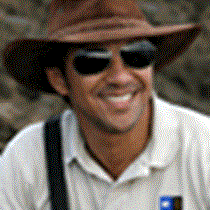Isabela & Fernandina Islands
Our expedition this morning started with an exploration of the farthest north-western realm of the Galápagos archipelago. The island of Isabela is by far the largest in the Galápagos and its land mass surpasses a bit the land mass of all the other islands put together.
As we navigated along its dramatic coastline, volcanoes revealed themselves behind the mild mist on the horizon. It is hard to believe that even at the equator the climatic conditions could be so unpredictable. This morning for instance, we had a chilly ocean breeze that made us feel as if we were anywhere but in the equator. Jackets and warm clothing were required for the early raisers that accompanied us on the outer decks during our whale watching/searching experience.
Later on, once we crossed the Equatorial line, we navigated along Ecuador volcano. This monumental volcano imposed its features as our naturalist Daniel explained the geology of the area.
The Zodiac cruise along the southern realm of this volcano gave us the chance to closely explore the population of animals that inhabit this part of the archipelago. Penguins and flightless cormorants, as well as sea turtles and Mola mola fish, were definitely the highlight of the morning.
After a very rewarding snorkeling outing, we headed to our next destination of the day, Fernandina Island. “La Cumbre” is the name of the only volcano found on this island, and it is considered to be one of the most active volcanoes in the Galápagos. Fernandina’s coastline is very dramatic and full of wildlife; flightless cormorant nests, penguin’s colonies and lots of iguanas and sea lions were found happily sharing this pristine environment, giving as the chance to appreciate and ecosystem that has been hardly touched by any human activity.
Our expedition this morning started with an exploration of the farthest north-western realm of the Galápagos archipelago. The island of Isabela is by far the largest in the Galápagos and its land mass surpasses a bit the land mass of all the other islands put together.
As we navigated along its dramatic coastline, volcanoes revealed themselves behind the mild mist on the horizon. It is hard to believe that even at the equator the climatic conditions could be so unpredictable. This morning for instance, we had a chilly ocean breeze that made us feel as if we were anywhere but in the equator. Jackets and warm clothing were required for the early raisers that accompanied us on the outer decks during our whale watching/searching experience.
Later on, once we crossed the Equatorial line, we navigated along Ecuador volcano. This monumental volcano imposed its features as our naturalist Daniel explained the geology of the area.
The Zodiac cruise along the southern realm of this volcano gave us the chance to closely explore the population of animals that inhabit this part of the archipelago. Penguins and flightless cormorants, as well as sea turtles and Mola mola fish, were definitely the highlight of the morning.
After a very rewarding snorkeling outing, we headed to our next destination of the day, Fernandina Island. “La Cumbre” is the name of the only volcano found on this island, and it is considered to be one of the most active volcanoes in the Galápagos. Fernandina’s coastline is very dramatic and full of wildlife; flightless cormorant nests, penguin’s colonies and lots of iguanas and sea lions were found happily sharing this pristine environment, giving as the chance to appreciate and ecosystem that has been hardly touched by any human activity.




